2015 Yamaha SuperJet Review
The last of the stand-up PWC lives on
A majority of today’s consumers likely think the stand-up PWC is gone, and for good reason. The last remanning stand-ups were powered by two-strokes, engines that went the way of the dinosaur thanks to stricter emissions regulations. After that fatal blow, the fun, agile craft seemingly vanished.
Except one didn’t. Believe it or not, Yamaha still produces the once-popular SuperJet. The craft comes with a catch: it’s for closed-course racing use only, meaning you can’t register it and ride it on your local waterway. But if you’re a hardcore racer – with a legitimate competition license and access to a private body of water – you can still get your hands on one.
And despite the craft’s advancing years, it still pretty much rocks.
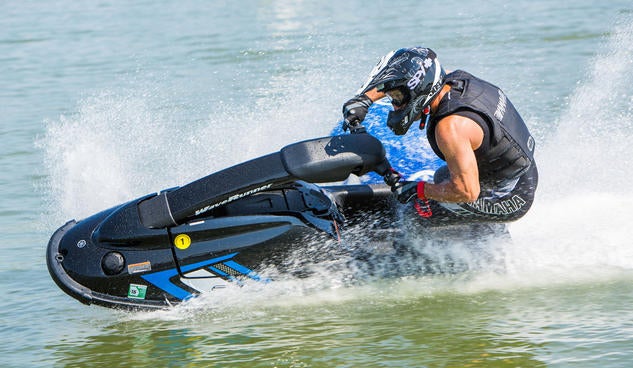 The last remaining stand-up PWC, the Yamaha SuperJet, is still being produced for the 2015 model year.
The last remaining stand-up PWC, the Yamaha SuperJet, is still being produced for the 2015 model year.Meet the Legend
And it rocks for a variety of reasons. Foremost among them is the iconic SuperJet hull. At 88 inches in length, just shy of 27 inches in width, and weighing in at only 306 pounds, the SuperJet feels like a stand-up should – light and agile – with the rider still feeling like they can exert an exceptional amount of influence over the craft.
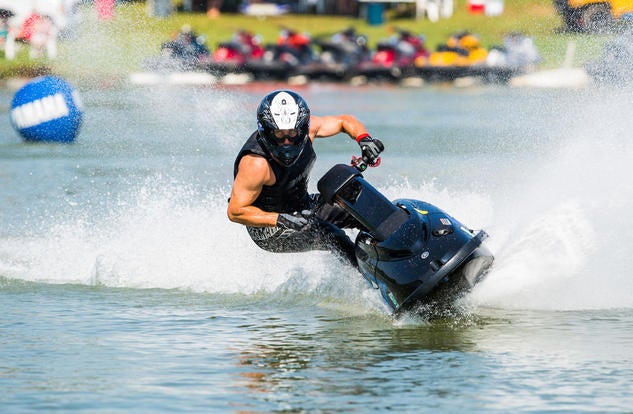 Thanks to its light weight, the SuperJet is incredibly agile and responds to rider input like no multi-seat runabout ever could.
Thanks to its light weight, the SuperJet is incredibly agile and responds to rider input like no multi-seat runabout ever could.One of the key changes to the hull occurred all the way back in ’08, when Yamaha took a cue from the aftermarket and widened the forward section of the hull, slimmed the aft section, and sharpened the chines. The pump was also moved farther back, and matched with an extended ride plate. Suddenly the SuperJet vied with the Kawasaki Jet Ski for sheer slalom course mastery, as more hull was in contact with the water directly at the craft’s pivot point, where it truly counts. This allows the craft to truly respond to a lean-in turning style, rail through the corners, and launch into endless freestyle maneuvers.
COMPARISON: Read our review of the Kawasaki Jet Ski 800 SX-R
Several features complement the boat’s agility. An adjustable steering connection at the handlebars can increase the boat’s turning response. The spring-loaded handlepole takes the load off the rider’s lower back. A kick tail, a SuperJet feature since the very beginning, allows you to leverage your trailing foot against the tail of the boat to lock in the stern. Finally, Hydro-Turf traction mats provide a tenacious grip to make sure the rider stays anchored in the tray.
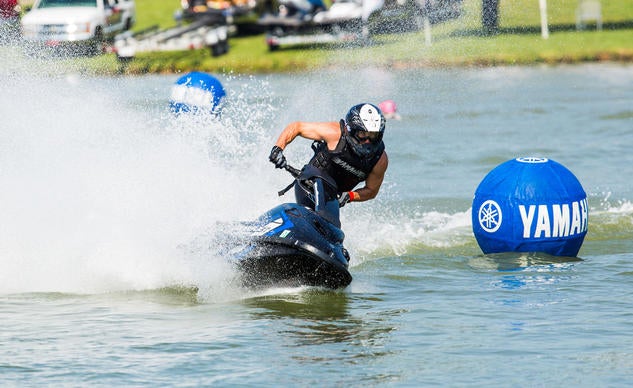 A spring-loaded handlepole saves riders from back pain, as they don’t have to be constantly lifting it up while riding.
A spring-loaded handlepole saves riders from back pain, as they don’t have to be constantly lifting it up while riding.Forgotten Performance
As to the aforementioned two-stroke, it remains a good one. Yamaha’s 701cc, dual 38mm carburetor engine was at one time the go-to powerplant in the Yamaha lineup. It’s linked via driveshaft to the 144mm jet pump, a design that produces an abundance of thrust. Grab a handful of throttle and this lightweight craft can jump out of the hole, or power its way through a turn. Keep it pegged – and retain your balance on this narrow craft – and you’ll edge towards 45 mph. Don’t dismiss the speed; on a stand-up, 45 mph feels a lot faster than on a big, ultra-stable runabout.
Most racers will also likely modify the engine; there is no shortage of aftermarket parts available.
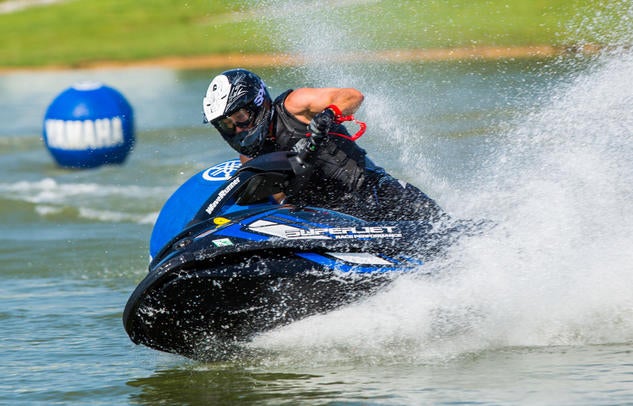 Sadly, the SuperJet is only available for closed-course competition.
Sadly, the SuperJet is only available for closed-course competition.As to the colors, the SuperJet remains black, with last year’s return to Yamaha Blue for the accent graphics. It’s true to the Yamaha heritage.
Let’s hope – for those closed-course competition types – it remains for a few more years to come.
| 2015 Yamaha Super Jet Specs | |
| Length | 88.2 inches |
| Beam | 26.8 inches |
| Dry Weight | 306 lbs |
| Engine | Twin cylinder, two-stroke |
| Displacement | 701 cc |
| Bore and Stroke | 81mm x 68 |
| Compression Ratio | 7.2:1 |
| Rated Horsepower | N/A |
| Fuel Capacity | 4.8 gal. |
| Colors | Black and Yamaha Blue |
| Price | $8,499 |
Get PersonalWatercraft.com in your Inbox!
Like PersonalWatercraft.com on Facebook
Comments
Most Popular

2025 Yamaha JetBlaster PRO 2-Up Review

2024 Kawasaki Jet Ski STX 160X Review

Remembering the Sea-Doo XP

Whatever Happened to the Wetbike?

2025 Yamaha JetBlaster Review




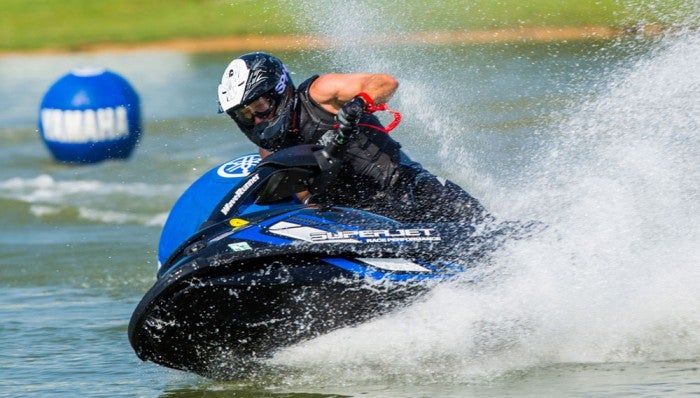






 Your Privacy Choices
Your Privacy Choices